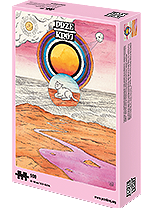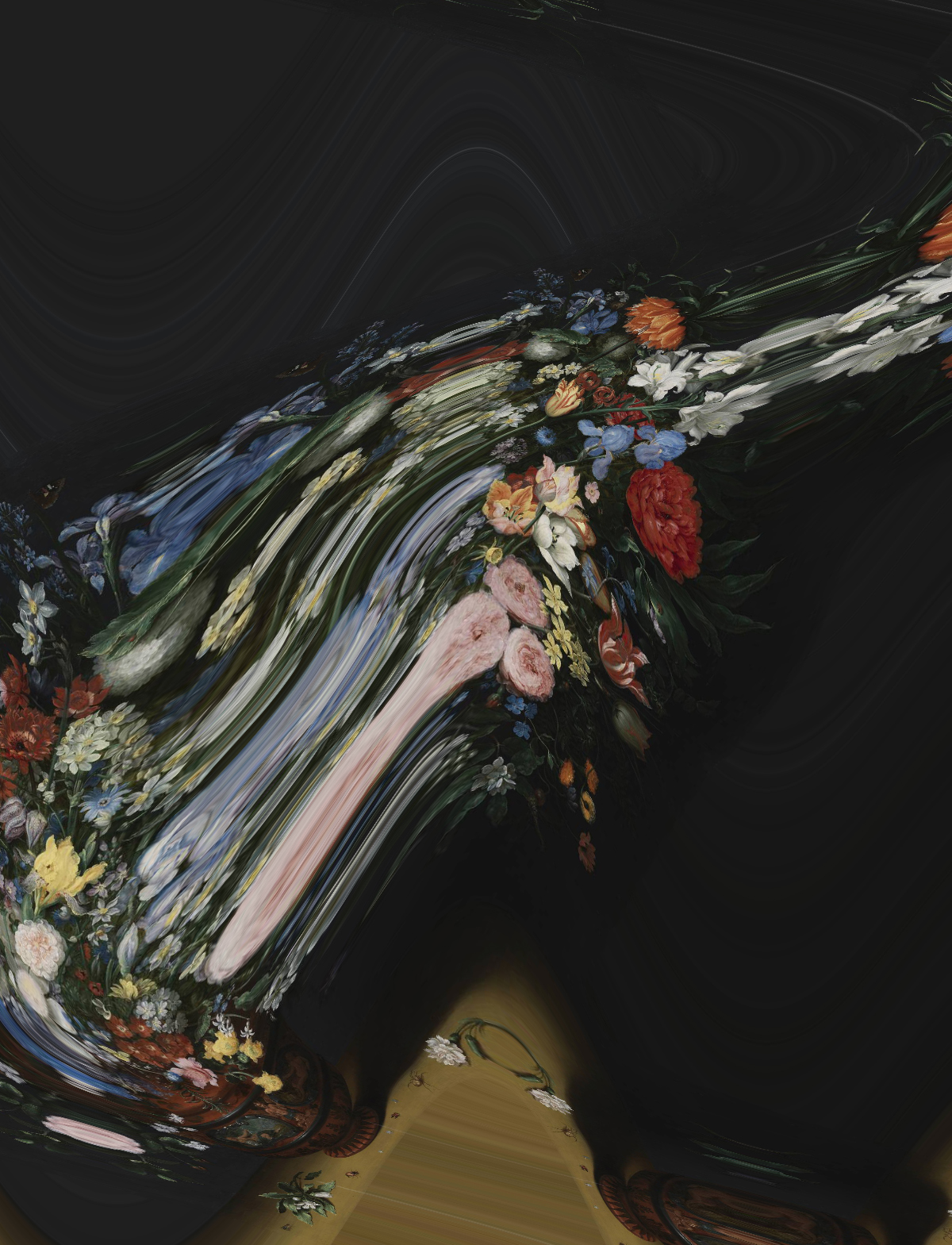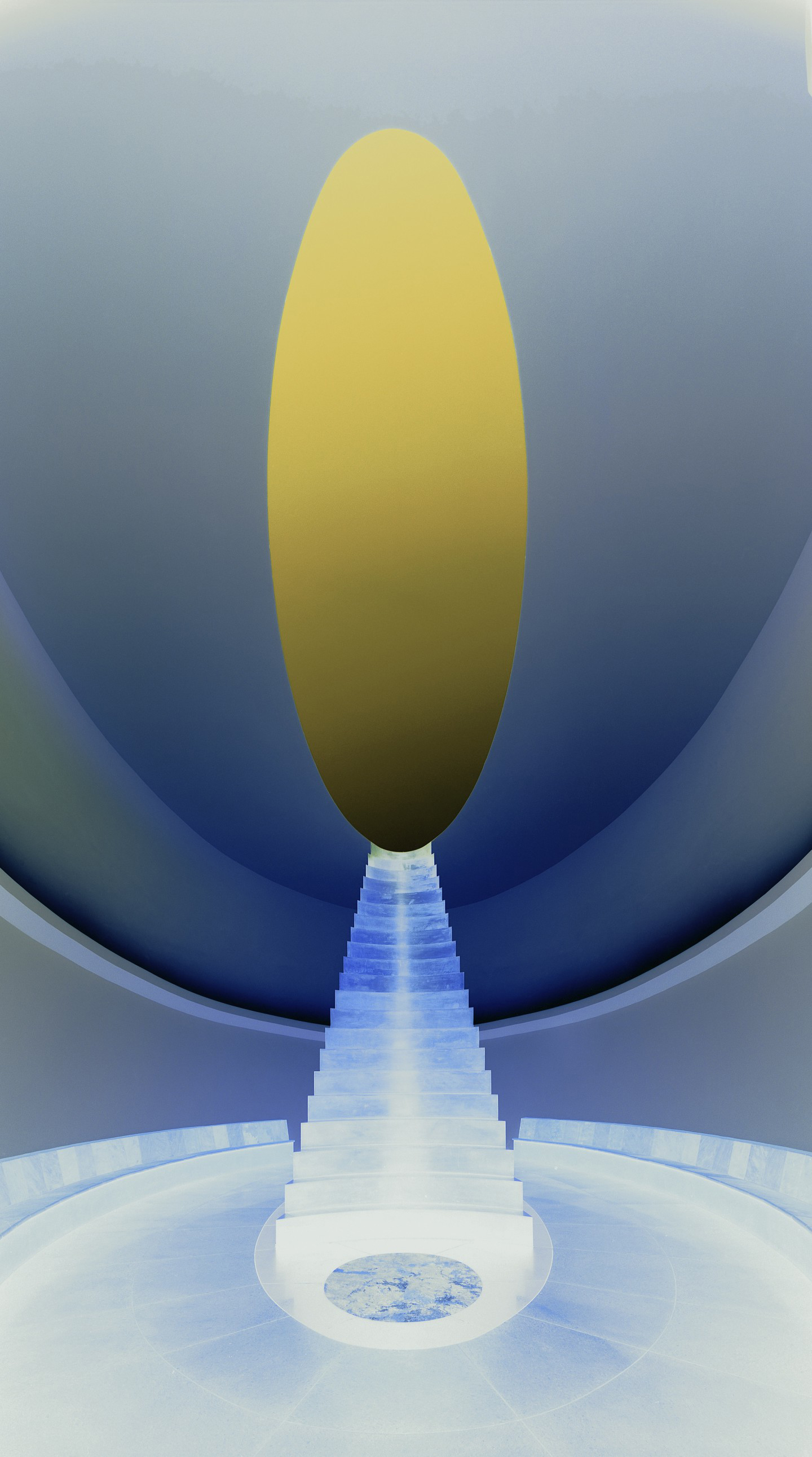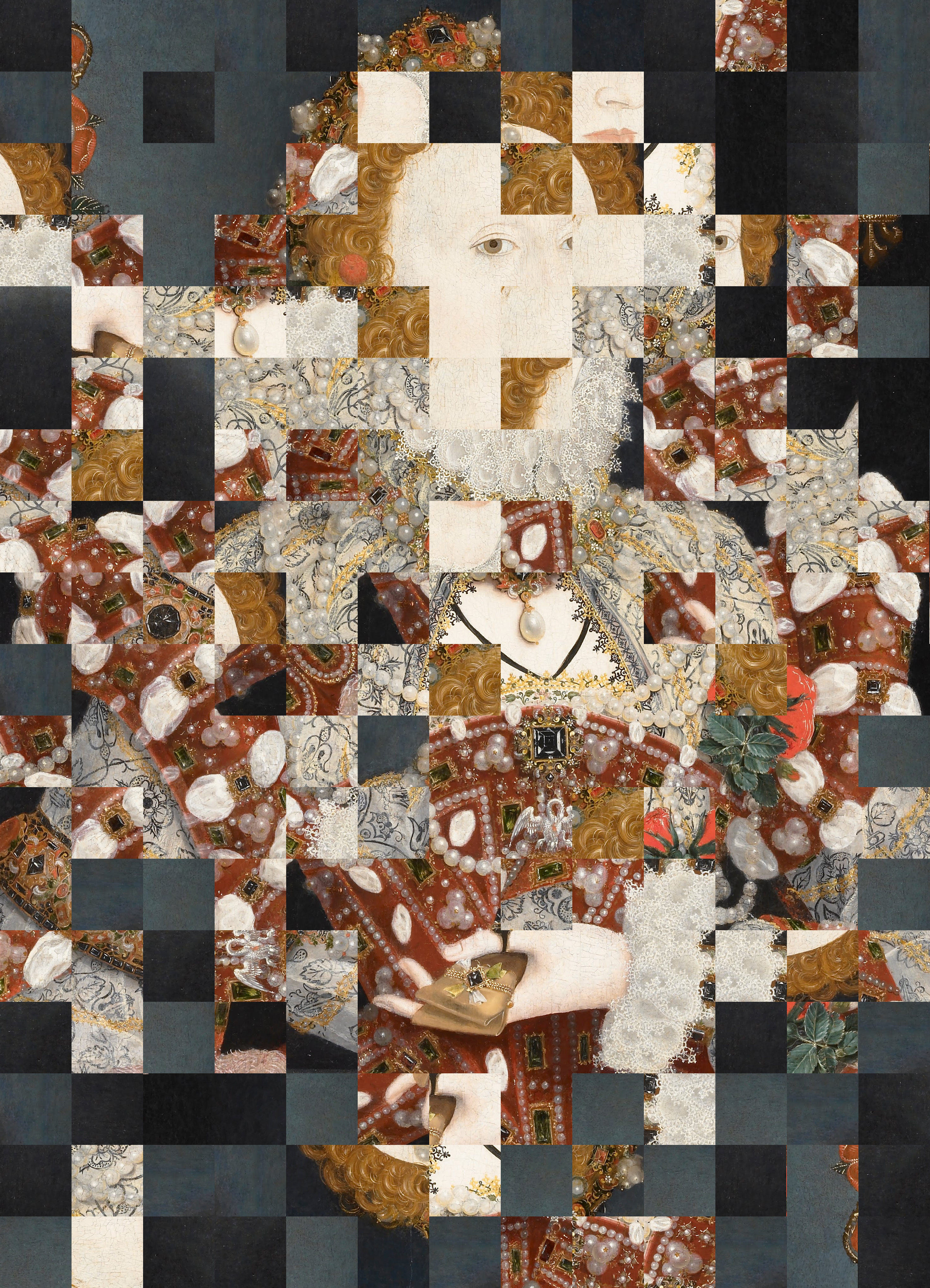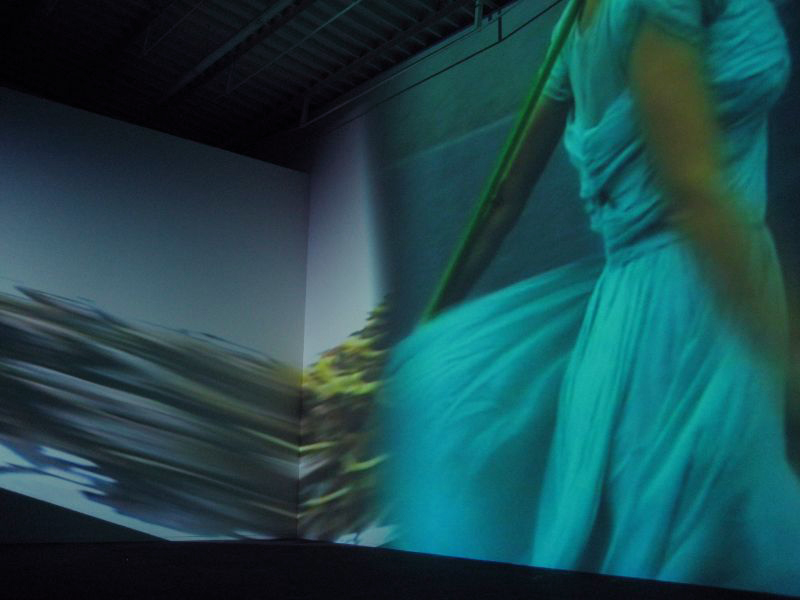
At the bottom of his work the artist placed small- and medium-sized flowers, such as forget-me-nots, narcissi, primroses and roses; slightly larger ones – tulips, gerber daisies and irises – occupy the centre of the image. Higher up there appear sumptuous peonies, tiger lilies and hydrangeas. The largest – white lilies, blue irises and a magnificent crown imperial – top off the bouquet.
You can read about this complex floral composition below the image.
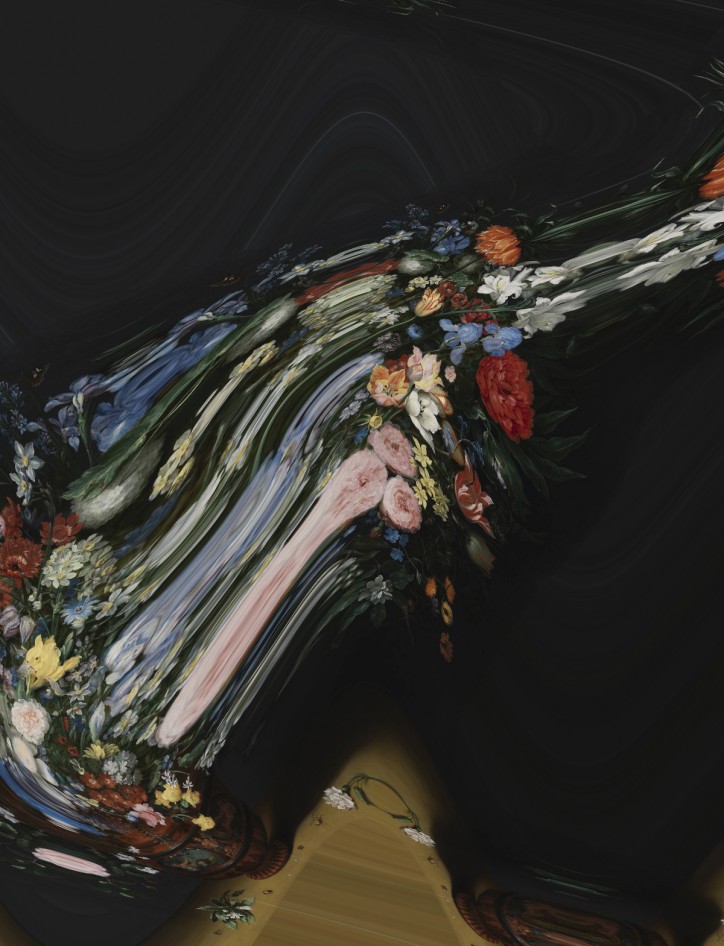
Bouquet of Flowers in a Ceramic Vase: this banal title hides one of the most beautiful examples of the fashion for still lifes, which blossomed in the world of 17th-century Dutch painting. It’s exactly this kind of work that earned Jan Brueghel the Elder, also called Velvet Brueghel and Paradise Brueghel, another nickname: Flower Brueghel.
The lush bouquets the artist painted aren’t just diligently composed; they also express his deep understanding of nature. The Antwerpian reproduced flowers with the flair of a true scholar. Additionally, every specimen is shown in the arrangement that suits it best: displayed so that it doesn’t block any others, and is visible itself. Different instances of each species are presented at various angles, so the viewer can comprehend their structure.
At the bottom of his work the artist placed small- and medium-sized flowers, such as forget-me-nots, narcissi, primroses and roses; slightly larger ones – tulips, gerber daisies and irises – occupy the centre of the image. Higher up there appear sumptuous peonies, tiger lilies and hydrangeas.
The largest – white lilies, blue irises and a magnificent crown imperial – top off the bouquet.
Although every flower is painted with such meticulous precision that the composition seems to be a copy of reality, such a bouquet could not have existed in Brueghel’s day. The artist composed it from species that bloom at different times of the year. From his letters we also know that he travelled around the country to sketch flowers that weren’t available in Antwerp.
The vase in the master’s painting is decorated with a colourful relief, on which we see two cartouches separated by a fantastic figure. The right cartouche presents the figure of Amphitrite, the Greek goddess of the sea; on the left is Ceres, the Roman goddess of vegetation and fertility. Many similar allegorical presentations identify these figures with the elements – water and earth respectively. This allows us to assume that the remaining two cartouches from the back of the vase show Vulcan, the Roman god of fire, and the personification of air, Apollo.
Brueghel was born in 1568, the son of the illustrious painter Pieter Brueghel the Elder and Maria (known as Mayken) Coecke van Aelst. His older brother was Pieter Brueghel the Younger, also a painter, nicknamed Hell Brueghel. Jan’s mother was the daughter of the renowned Flemish artist Pieter Coecke van Aelst and the outstanding miniaturist Mayken Verhulst, known as Maria Bessemers. It was she who looked after the initial education of young Jan and his brother.
From his grandmother, in addition to schooling, Jan got a solid education in the studios of Antwerp’s painters; following the pattern of young artistic talents of the day, he set out on a journey to Italy, to hone his skills and present the effects of his work to Italian art dealers. During his stay in Rome, he met Cardinal Federico Borromeo, who quickly became his friend and patron. After Brueghel returned to the Habsburg Netherlands, the governor general of the country, Albrecht, and his wife Isabella, also extended their patronage. Already then, the painter enjoyed widespread recognition in Flemish painters’ circles, which is best evidenced by his friendship with Rubens.
In Brueghel’s day, flowers were very valuable goods in this part of the world – a good example of which is the tulip mania. The tulip fever, as it was also called, was started quite innocently by Carolus Clusius, when the outstanding French doctor and botanist working in Flanders decided to grow tulips, whose bulbs he had received as a gift from his friend Ogier Ghiselin de Busbecq, also a famous botanist, and the French ambassador to the Sultan’s court at Constantinople.
Clusius started to cross different varieties of these plants, unknown in Europe at the time, adjusting them to the colder Dutch climate. Initially, the botanist planned to earn money by selling the resulting flowers, but somebody stole the bulbs from his greenhouse. This theft caused the appearance of this floral novelty on Dutch markets, and then contributed to the huge popularity of tulips and sky-high prices for them. The extent of the floral madness is shown by the sale of the famous Semper Augustus tulip, whose price reached 6000 guilders (about €1 million today).
Only the wealthy could permit themselves the luxury of a bunch of freshly cut flowers so rich as the one in Brueghel’s painting. Owning an exquisitely painted bouquet was a highly valued alternative to a live composition, and the only way at all to gather such a diversity of flowers at the same time.
With his floral compositions, rather than once again calling to mind transitoriness, as many Baroque painters did, Brueghel encouraged the celebration of life in all its beauty and complexity. The Dutch painter’s scrupulousness of observation, detailed rendering of nature and encyclopaedic systematicity fit with the lively interest in nature and scholarly efforts of the beginning of the 17th century, expressed in the numerous botanical and herbal anthologies circulating through the Europe of the day.
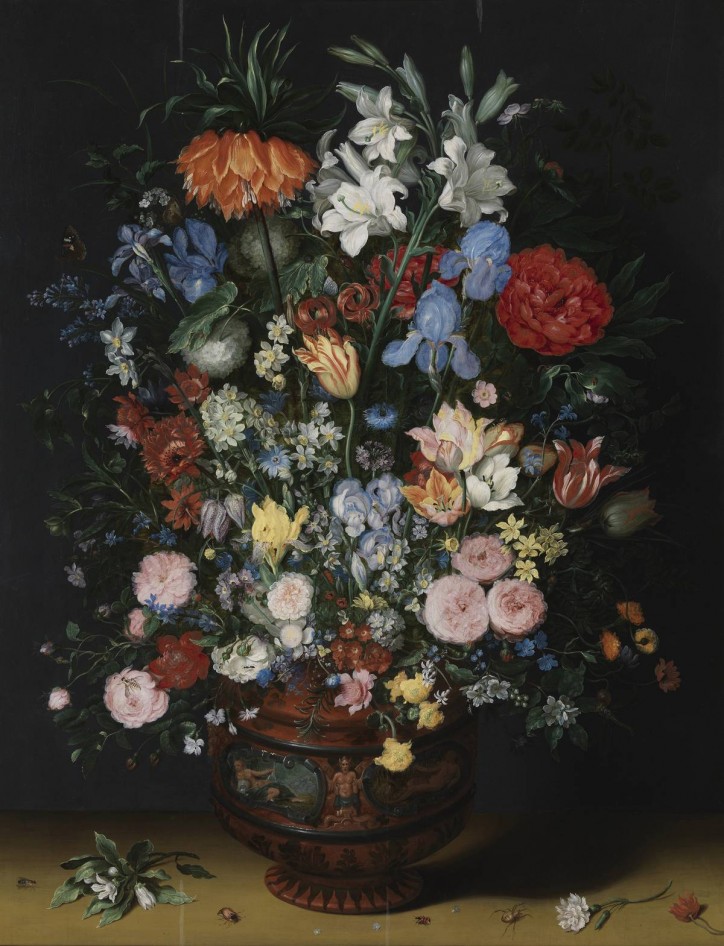
Translated from the Polish by Nathaniel Espino

